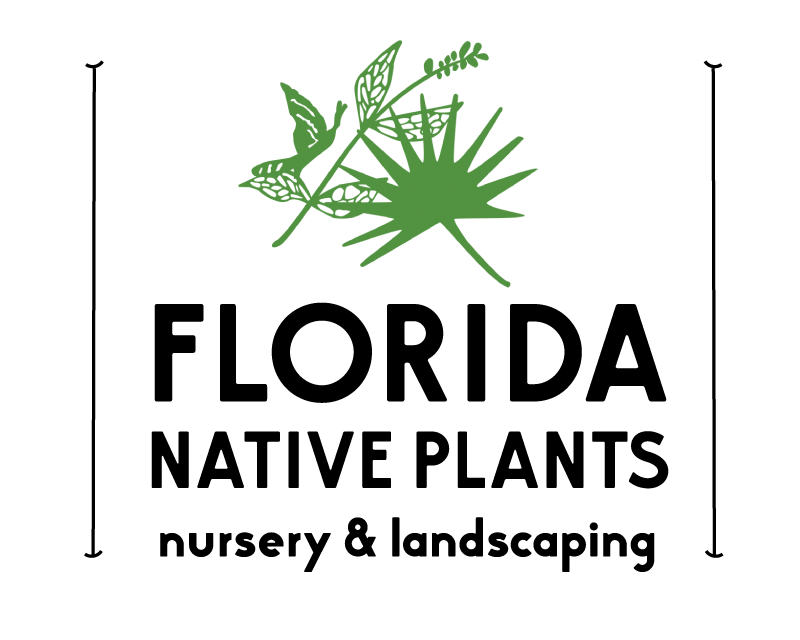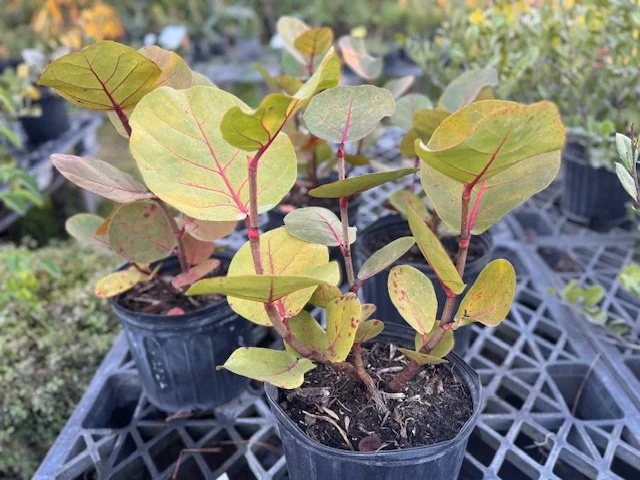Replanting Your Coastal Landscape after a Storm
Written by Laurel Schiller for Florida Native Plants Nursery
Maintaining healthy, vigorously growing vegetation on your beach and bay front is an essential component of living on coastal property. Planting coastal native plants will minimize the need for replanting after future storm damage and minimize the cost and time of establishing new plantings. Work with Nature by replanting important native plants that grow naturally along the salt water's edge in Florida. The native plants of our region, planted in the right place, will thrive as they have over eons of time.
The Florida Native Plants Nursery in Sarasota has been providing our community with salt-tolerant coastal native plants for over 40 years. We hope that the following article will get you started in your restoration of or the enhancement of your coastal landscape.
You can also view our salt-tolerant plant list on our website here: floridanativeplants.com/salttolerant.
Where to start after a storm? Replant shorelines first - appropriately planted shorelines are the first line of defense for your home and property against wind, salt spray, shifting sands and salt water from hurricanes and storms.
On the Beach
Stabilize shifting sand and bind it into dunes.
Sea Oats & Railroad Vine
Start your replanting of damaged beach front on the highest, driest stretch of open sand between structures and the highest tide line. Plant down the beach toward this high-water mark. Sea Oats do not tolerate wet sands except briefly during storms.
Plant containers of one gallon or 4-inch Sea Oats about 10 to 12 inches apart. At the bottom of each planting hole, place a little organic, slow release fertilizer to encourage root growth. Bury the plant so that about 2/3rds of the roots and stem are beneath the surface of the sand. This will allow the roots to penetrate down into moist, nutrient laden sand more quickly. Be sure to plant deep enough so the plants are not unrooted by wind. Water well initially and then three times a week for three weeks, two times a week for two weeks and one time a week for one week. New growth should be vigorous after this establishment period. Railroad vine (4-inch or 1 gallon size) can be interspersed with the sea oats at about three-foot intervals.
If living in Sarasota County, check with the county before planting on beach front for specific regulations or times of the year when it is permissible to plant without disturbing sea turtle nesting.
Sabal Palms & Sea Grapes
Native Sabal Palms and Sea Grapes grow naturally just shoreward of the Sea Oats and Railroad Vine foredune area. They can be found in the area where there are stabilized, mounded sands that do not shift.
Sabal Palms can be purchased as clear trunk or booted specimens in various heights typically from 12 to 18 ft tall. Sabal Palms can be safely planted closer to building foundations than trees and they provide optimum protection against hurricane force winds.
Sea Grape shrubs/trees can also be purchased in different sizes and can be sculpted or pruned to create “windows” and "viewscapes" instead of "walls" or hedged vegetation.
On the Bay
Create a root and branch barrier to future wind and water erosion.
Replant Red Mangrove at the water's edge, Black Mangrove above it and White Mangrove shoreward of both.
These tree species are tolerant of salt water inundation and wind damage protecting higher ground from both. If allowed to grow to their naturally tall height they can be sculpted and trimmed to create “windows” or "viewscapes" instead of overly pruned to be hedge-like. This is the legal practice in many counties that aim to protect natural habitat for shorebirds as well as the shoreline.
In Sarasota county, there are specific guidelines that should be referenced before pruning Mangroves to ensure legal compliance.
Space young trees about three to four feet apart. Three gallon starter trees are easy to get established and begin to provide protection quickly. One gallon material takes longer but is less expensive and seven gallon trees provide protection sooner.
Green Buttonwood, Gumbo Limbo and Strangler Figs
Medium height Green Buttonwood trees and Sabal palms provide shade above the mangrove edge as do larger growing Strangler Figs and Gumbo Limbo. Green Buttonwood shrubs are excellent salt tolerant buffers providing privacy where needed.
Green Buttonwood (7 gallon size)
Further Inland
Moving further inland from the Sabal Palm / Sea Grape zone, planting areas can vary from high and very dry, to lower and wetter (often salt-water inundated). A helpful chart of specific native plants for these areas and their varying levels of saltwater flood tolerance, salt spray tolerance, etc. can be found on our website at floridanativeplants.com/salttolerant.
Planting areas that are further inland and therefore a little more protected from harsher coastal conditions such as heavy wind and salt spray are where gardeners can introduce salt-tolerant non-native plants. Because many introduced, non-native, plants require protection from the elements, use them sparingly as accents. Our nursery carries Florida-Friendly, non-native, salt-tolerant plants that you can incorporate into your plantings that can complement native plantings.
Bottom Line
After storms it will always be necessary to assess the damage done to these zones and replant as needed, but choosing native plants and planting them in the right place will help protect the land from future damage and increase your enjoyment of coastal living in Florida.





